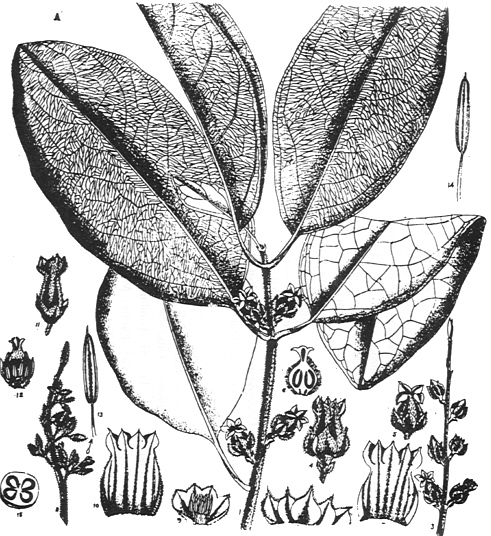

Zitierweise / cite as:
Carakasaṃhitā: Ausgewählte Texte aus der Carakasaṃhitā / übersetzt und erläutert von Alois Payer <1944 - >. -- Anhang A: Pflanzenbeschreibungen. -- Symplocos racemosa Roxb. -- Fassung vom 2007-05-09. -- URL: http://www.payer.de/ayurveda/pflanzen/symplocos_racemosa.htm
Erstmals publiziert: 2007-03-19
Überarbeitungen: 2007-05-09 [Ergänzungen]; 2007-04-16 [Ergänzungen]
Anlass: Lehrveranstaltung SS 2007
©opyright: Dieser Text steht der Allgemeinheit zur Verfügung. Eine Verwertung in Publikationen, die über übliche Zitate hinausgeht, bedarf der ausdrücklichen Genehmigung des Verfassers
Dieser Text ist Teil der Abteilung Sanskrit von Tüpfli's Global Village Library
WARNUNG: dies ist der Versuch einer
Übersetzung und Interpretation eines altindischen Textes. Es ist keine
medizinische Anleitung. Vor dem Gebrauch aller hier genannten Heilmittel wird
darum ausdrücklich gewarnt. Nur ein erfahrener, gut ausgebildeter ayurvedischer
Arzt kann Verschreibungen und Behandlungen machen!
Falls Sie die diakritischen Zeichen nicht dargestellt bekommen, installieren Sie eine Schrift mit Diakritika wie z.B. Tahoma.
Verwendete und zitierte Werke siehe: http://www.payer.de/ayurveda/caraka0001.htm

Abb.: Symplocos racemosa Roxb.
[Bildquelle: Kirtikar-Basu, ©1918]
Drury:
"Symplocos racemosa (Roxb.) N. O. Styracaceae. Description.—Tree; leaves oblong-lanceolate, acuminate, acute at the base, quite glabrous, sub - denticulate, shining above; racemes simple, axillary, nearly equalling the petiole, hairy ; sepals and bracteoles ovate, obtuse, ciliated; ovary free at the apex; flowers small, yellow. Fl. Dec.—Roxb. Flor. Ind. ii. 539.—Dec. Prod. viii. 255.—S. thecefolia, Don. Prod. Flor. Nep. 145.——Bengal. Western Ghauts.
Economic Uses.—This tree grows in the Kotah jungles. The bark is used to dye red, and is exported for that purpose.—Fleming."
[Quelle: Drury, Heber <1819 - 1872>: The useful plants of India : with notices of their chief value in commerce, medicine, and the arts. -- 2d ed. with additions and corrections. London : Allen, 1873. -- xvi, 512 p. ; 22 cm. -- s.v.]
Dutt:
"SYMPLOCOS RACEMOSA, Roxb. Sans, Lodhra, Tillaka.
Vern. Lodh, Beng. Hind.The bark of this tree, used in dyeing red, is considered cooling, astringent and useful in bowel complaints, eye diseases, ulcers, etc. It enters into the composition of numerous prescriptions for bowel complaints, along with bela, and kurchi bark. A decoction of the wood is used as a gargle for giving firmness to spongy and bleeding gums. In bleeding from the gums, a paste composed of lodhra bark, rasot, tubers of Cyperus rotundus (mustaka ) and honey, is applied to the gums. The Amritasāgara recommends the following application for ophthalmia. Take of lodhra bark, liquorice root, burnt alum and rasot, equal parts, and rub into a paste with water. This is applied round the eyes."
[Quelle: Dutt, Uday Chand: The materia medica of the Hindus / Uday Chand Dutt. With a glossary of Indian plants by George King. -- 2. ed. with additions and alterations / by Binod Lall Sen & Ashutosh Sen. -- Calcutta, 1900. - XVIII, 356 S. -- S. 189.]